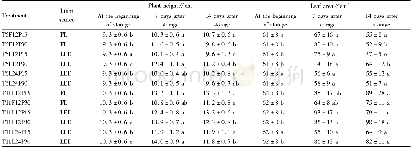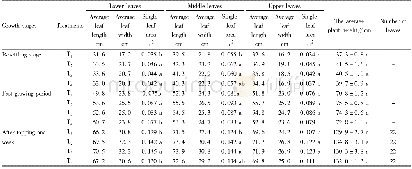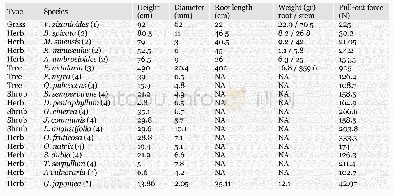《Table 1 Morphological characters of Luisia appressifolia and related species》
 提示:宽带有限、当前游客访问压缩模式
提示:宽带有限、当前游客访问压缩模式
本系列图表出处文件名:随高清版一同展现
《聚叶钗子股—中国兰科新记录种及形态特征增补(英文)》
Morphologically,the newly recorded species is similar to L.teres,L.megasepala,L.hancockii,and L.tenuifolia by having few flowers on each inflorescence,relatively large flowers,and bilobed epichile(Table 1).However,it differs from L.teres(distributed in China,Japan,and Korea)by having short stem,acute apex of leaves,1-flowered/inflorescence,and epichile emarginated at apex(vs long stem (ca.55 cm),obtuse apex of leaves,1-7-flowered/inflorescence,and bilobed epichile in L.teres) [6];from L.megasepala(distributed in China)by smaller sepals(9.0×5.5 mm),ellipse petals,subrectangular lateral lobes of hypochile,and adaxially with fleshy longitudinal ridge on epichile(vs bigger sepals (15×6.5 mm),obovate to spatulate petals,ovate-triang ular lateral lob esof hypochile,and adaxially with reticulatesulcate on epichile in L.megasepala) [6];from L.hancockii(distributed in China)by rigid leaves,relatively large petals(12×6.5 mm),lateral lobes of hypochile,and adaxially with fleshy longitudinal ridge on epichile(vs slender leaves,small petals (6.0×3.0 mm),no lateral lobes of hypochile,and adaxially with three or four papillate longitudinal ridges on epichile in L.hancockii) [6];from L.tenuifolia(distributed in India and Sri Lanka)by ellipse sepals and subrectangular lateral lobes of hypochile(vs lanceolate petals and ovate-triangular lateral lobes of hypochile in L.tenuifolia)[3,6].
| 图表编号 | XD0059278000 严禁用于非法目的 |
|---|---|
| 绘制时间 | 2019.02.01 |
| 作者 | 吴训锋、罗勇、Pankaj Kumar、刘强 |
| 绘制单位 | 云南林业职业技术学院、景洪林业局、香港嘉道理农场暨植物园、云南林业职业技术学院、中国科学院西双版纳热带植物园 |
| 更多格式 | 高清、无水印(增值服务) |
查看“Table 1 Morphological characters of Luisia appressifolia and related species”的人还看了
-

- Table 6 Analysis of variance components and genetic gains of growth characters from open-pollinated progenies
-

- Table 1 Effects of formaldehyde and low-light stress on morphological characteristics of Hedera spp.
-

- Table 1 Effects of low temperature and poor light storage environments on the morphological indicators of pepper seedlin





